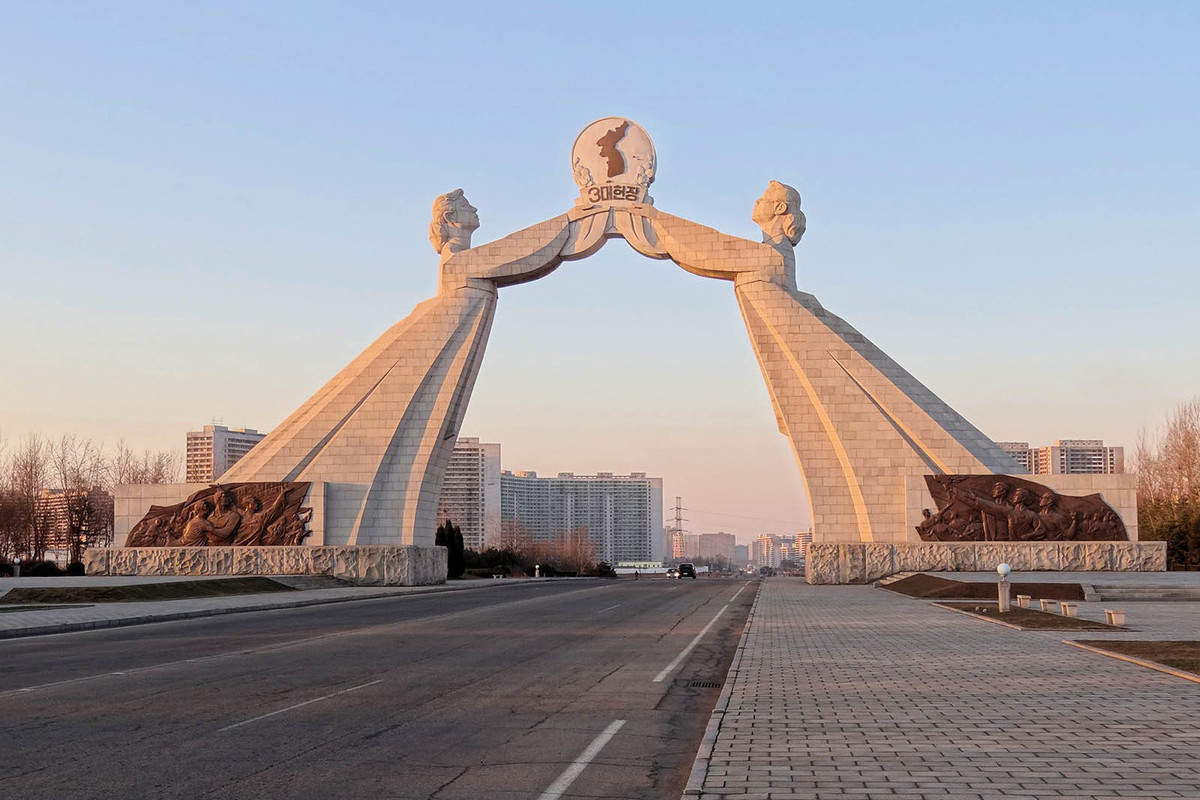The DPRK got rid of a huge “eyesore”: hopes for unification collapsed
[ad_1]

North Korea has destroyed a monumental symbol of hope for reunification with the South. The Reunification Arch, built in 2000 after the landmark inter-Korean summit, has disappeared from satellite images of North Korea.
North Korea tore down a monument that symbolized hope for reconciliation with the South, days after North Korean leader Kim Jong Un said peaceful reunification of the two Koreas was no longer possible.
In the latest sign of rising tensions on the peninsula, The Guardian writes, the Reunification Arch, built in 2000 after the landmark inter-Korean summit, has disappeared from satellite imagery, news site NK News reports. It is not yet entirely clear when and how it was dismantled, NK News reports.
Kim Jong Un, whose tone has become noticeably combative in recent weeks, described the concrete arch, which depicts two women, one each from the North and South, holding an emblem with the outline of the Korean Peninsula, as an “eyesore” during a speech at the Supreme People’s Assembly North Korea this month. This is the parliament.
The North Korean leader added that the DPRK’s constitution should be amended to reflect South Korea’s new status as his country’s “main enemy,” effectively ending decades of official policy that has emphasized the eventual reunification of the North with the South of the Korean Peninsula.
Officially known as the Three Charters of National Reunification Monument, the 30-meter arch symbolized self-reliance, peace and national cooperation, according to South Korean government documents.
Situated on the Reunification Highway, which connects Pyongyang to the heavily armed border with the South, the monument was reportedly erected to commemorate reunification plans put forward by Kim Jong Un’s grandfather and North Korea’s founder Kim Il Sung.
While the announcement of his removal is purely symbolic, it will add to concerns that North Korea has taken a more provocative course in its relations with the South and its allies in the months ahead of the US presidential election.
The regime claimed to have launched its first spy satellite in November and last week said it had test-fired a new ballistic missile equipped with a hypersonic, maneuverable warhead. The North fired several cruise missiles into the sea two weeks after firing artillery salvos near the countries’ disputed maritime border, South Korea’s military said Wednesday.
The North used the missile launches to protest joint military exercises between South Korean and US troops, which the regime considers an invasion rehearsal.
Asked whether the provocative tone of North Korea’s recent statements, including one in which it said it was “preparing for nuclear war,” was a cause for concern, White House spokesman John Kirby said: “We’re watching this very, very attentively”. He added: “I would simply tell you that we remain confident that the defensive posture we take on the peninsula is commensurate with the risk.”
There is little prospect of a return to the era of cross-border rapprochement symbolized by the monument, The Guardian notes.
Under its conservative President Yoon Suk-yol, South Korea has taken a tougher stance against Pyongyang, vowing to respond immediately and forcefully to North Korean “provocations.”
In response, the North promised to “wipe out” its neighbor if attacked by South Korean and American troops. Late last year, Pyongyang said a 2018 agreement with the South aimed at de-escalating military tensions was no longer valid.
North Korea’s Supreme People’s Assembly last week abolished government agencies that controlled interaction with the South.
[ad_2]
Source link








